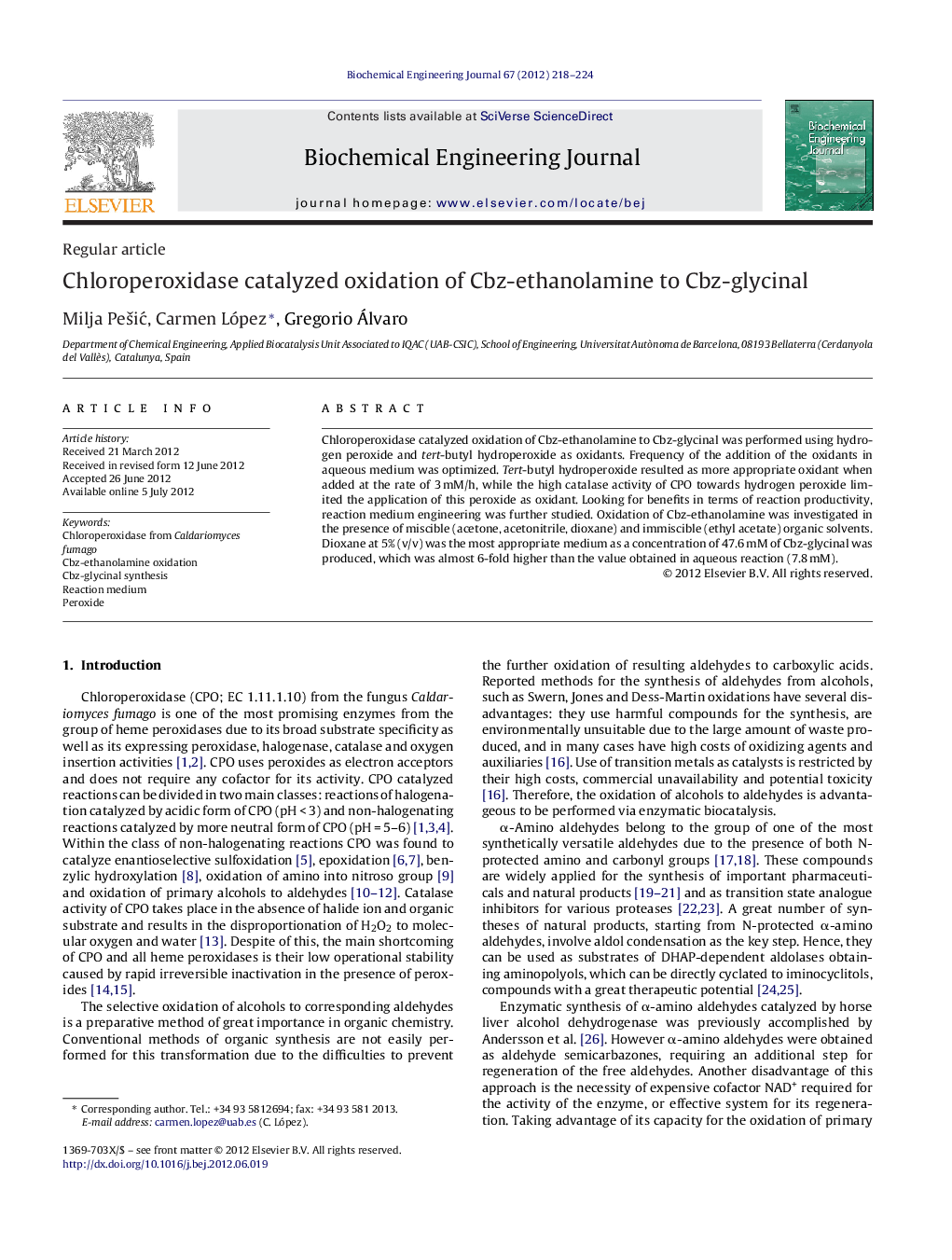| Article ID | Journal | Published Year | Pages | File Type |
|---|---|---|---|---|
| 3524 | Biochemical Engineering Journal | 2012 | 7 Pages |
Chloroperoxidase catalyzed oxidation of Cbz-ethanolamine to Cbz-glycinal was performed using hydrogen peroxide and tert-butyl hydroperoxide as oxidants. Frequency of the addition of the oxidants in aqueous medium was optimized. Tert-butyl hydroperoxide resulted as more appropriate oxidant when added at the rate of 3 mM/h, while the high catalase activity of CPO towards hydrogen peroxide limited the application of this peroxide as oxidant. Looking for benefits in terms of reaction productivity, reaction medium engineering was further studied. Oxidation of Cbz-ethanolamine was investigated in the presence of miscible (acetone, acetonitrile, dioxane) and immiscible (ethyl acetate) organic solvents. Dioxane at 5% (v/v) was the most appropriate medium as a concentration of 47.6 mM of Cbz-glycinal was produced, which was almost 6-fold higher than the value obtained in aqueous reaction (7.8 mM).
► An amino aldehyde was synthesized using chloroperoxidase from Caldariomyces fumago. ► Pulses of tert-butyl hydroperoxide yielded high conversion preserving CPO activity. ► Biphasic and cosolvent systems allowed an increase of amino aldehyde productivity. ► Use of 5% (v/v) dioxane permitted 6-fold higher production of Cbz-glycinal.
